Guest post courtesy of Pat Raia: Keep Your Horse Safe From Toxic Plants. The views and opinions expressed in this article are those of the guest author and do not necessarily represent the views of Val Heart & Heart Communication Enterprises Inc. This article was previously published February 14, 2012 and was updated on May 9, 2022.
Toxic plants don’t always show up where you expect them
One spring a few years ago, four horses on a Colorado farm began losing weight and developed photosensitization (a condition characterized by sensitivity to sun exposure) and neurologic signs. A thorough physical exam and blood work helped veterinarians determine the horses had extensive chronic liver disease, and a liver biopsy confirmed typical signs of pyrrolizidine alkaloid poisoning. These alkaloids are typically found in groundsels such as tansy ragwort, fiddle neck, and rattle pod. However, none of these plants were present in the horses’ pasture.
But when the horses’ owner broke open a bale from the hay supply he had been feeding all winter, he noticed significant amounts of broad, hairy leaves that were eight to 12 inches long. These leaves were identified as hound’s tongue, a noxious weed in many areas across the country that contains significant quantities of pyrrolizidine alkaloids. Hound’s tongue remains toxic even when dried in hay. These alkaloids have a cumulative effect on the liver, and after eating the contaminated hay over the winter, the horses developed chronic irreversible liver disease. Eventually, all four of the affected horses were euthanized because of liver failure.
Hound’s tongue is one of myriad plants toxic enough to cause illness and even death in horses. So it’s important that owners recognize poisonous plants growing in or near their horses’ pastures and prevent their animals from ingesting them.
According to Carey Williams, PhD, extension specialist and associate director of outreach at Rutgers University’s Equine Science Center, horses generally avoid eating poisonous plants, especially when more palatable choices are available.
“Most poisonous plants have defense mechanisms–syrup or sap that’s very bitter or spines and thorns that make them uncomfortable to chew or swallow–so horses will generally avoid them, especially if they have lots of good-quality hay and good-quality pasture available to them,” she says.
Even so, some harmful plants are attractive to horses at certain times of the year.
For example, wilted red maple leaves are among the plants most toxic to horses. But they can be hard for horses to resist because the leaves’ high sugar content draws the animals. Horses can be exposed to red maple leaves in the fall when drying leaves blow into pastures. Ingesting 1½ pounds is toxic in a horse; three pounds is lethal.
“Red maple has an oxidant that destroys hemoglobin–red blood cells,” says Anthony P. Knight, BVSc, MS, Dipl. ACVIM, professor and veterinary extension agent in Colorado State University’s College of Veterinary Medicine & Biomedical Sciences and author of “A Guide to Plant Poisoning of Animals in North America”. “Horses will present with weakness, jaundice, and anemia, and urine may turn dark brown as the body filters out the dead cells.”
Other plants outside pastures can be toxic to horses as well–ornamental plants used in landscaping, such as rhododendron, azalea, and yew, for example. The latter ornamental plant is an evergreen, so it and other evergreens remain toxic year-round because they never lose their leaves. Between 10 and 15 ounces of yew leaves are sufficient to kill a 1,000-pound horse.
Oleander is a leafy, flowering drought-resistant plant often used in ornamental landscaping in California and across the Southern states to Florida. It contains cardiac glycosides–naturally occurring compounds that can cause colic, loss of coordination, profuse sweating, difficulty breathing, abnormal heart function, muscle tremors, and potentially death from cardiac failure.
“A few mouthfuls of oleander leaves can be fatal to a horse,” says Knight. “The toxin is similar to digitalis (a drug that comes from the foxglove plant and is prescribed to certain heart patients); it works on the heart, affecting normal heart rhythm.”
Often these plants are introduced into a horse’s environment via a well-meaning neighbor. “A farm might have a neighbor right next door, and the neighbor might clip rhododendron, azalea, or Japanese yew plants and put the clippings in the pasture thinking, ‘I’ll feed the horses,” Williams says. The best thing an owner can do to prevent this from happening is to talk with neighbors and ask them not to feed the horses anything, including lawn and garden clippings.
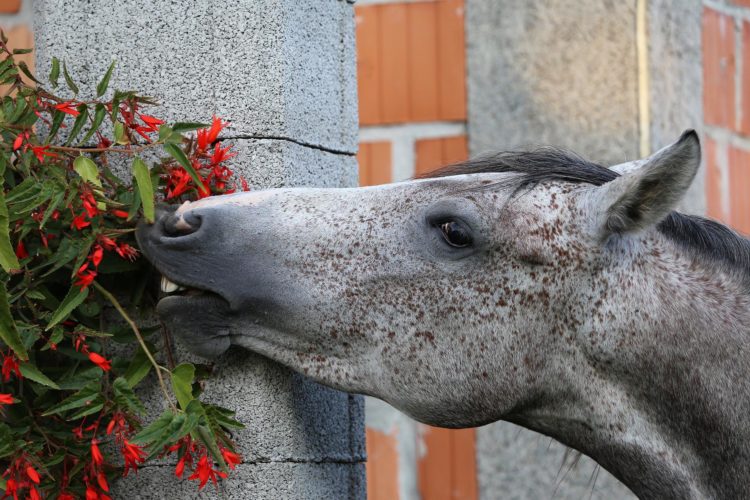
Some weeds and wildflowers put horses at risk for poisoning as well, says Knight. One such plant found nationwide is the weed Senecio, also known as groundsel. Senecio’s toxic effects can take a month or more to appear in horses, but clinical signs of Senecio-related poisoning are generally easy to identify, Knight says.
“Senecio gradually destroys the liver, causing the owner to see weight loss, jaundiced eyes, and in white skinned areas photosensitization that looks like severe sunburn,” he says. At this stage, there is no effective treatment or way to reverse the liver damage.
The effects of water hemlock ingestion, for instance, are much more immediate. Found just about everywhere in the United States where there is water, this is one of the most poisonous native plants. It contains the unsaturated alcohol cicutoxin in all parts of the plant, especially in the roots and stem base. The toxin causes severe stimulation and paralysis of the nervous system. The plant is highly toxic; two or three ounces can kill.
Depending on the area of the country, other plants can be a problem when horses are forced to consume them because little good quality pasture or hay is available. For example, locoweed in the Western states can cause irreversible neurologic signs in horses; Russian knapweed and yellow star thistle will cause permanent brain damage.
Detection and Prevention
Owners need to be extremely sensitive to changes in their horses’ appearance and behavior in order to detect possible plant poisoning. “It’s important to know your horse well–what is normal for your horse,” Williams says. “And if you suspect the horse has ingested something toxic, call your veterinarian right away. Then call your extension agent to walk the pasture with the veterinarian to find the culprit.”
Both Williams and Knight advise owners to know their horses’ environments well, too. “The first thing people should do is walk their pastures to see what kind of plants are growing there to identify the ones that are toxic to their horses,” Williams says. To help identify poisonous plants in your pasture, take a look at the list.
“And anytime you find a plant you can’t identify or are not familiar with, take a digital photo of the plant and e-mail it to your extension agent,” says Knight. Your county extension agent can even come out to the farm and identify toxic plants prevalent in your region.
Williams says owners also can minimize the risk of toxic plants growing in their pastures if they create buffer zones between neighbors’ properties and their own. Not only do these zones separate horses from toxic plants residing next door, but they also allow owners to control plant growth without violating property lines.
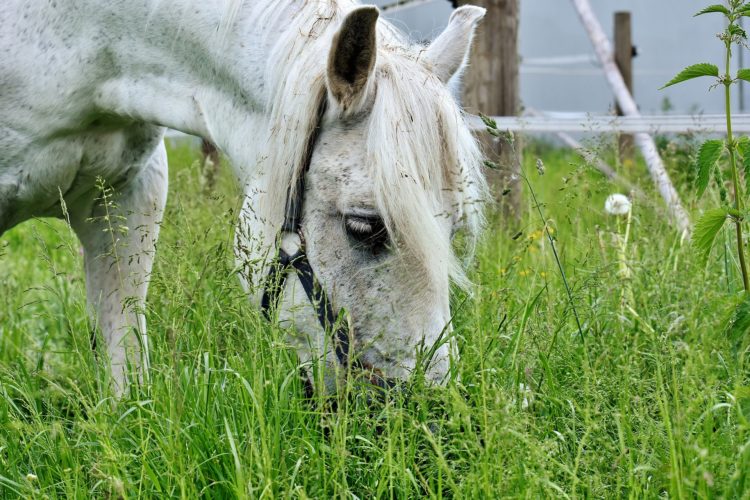
“If you move a fenceline three to six feet inside your own property line, you know where you can clear cut without encroaching on your neighbor’s property,” Williams says. “Six feet may seem like a lot if the pasture is small, but it will make it easier to control toxic plant growth in your pasture.”
Owners who use herbicides to keep toxic plants from invading pastures should be sure that herbicidal preparations are manufactured to be effective on the plants they specifically want to destroy. Read labels carefully, and be strict about following manufacturers’ application directions. Owners who use herbicides should also faithfully follow manufacturers’ directions for restricting grazing on treated pastures. Wear waterproof gloves before removing poisonous plants from your property by hand, and immediately dispose of any toxic plants in a location where horses cannot access them.
Don’t forget that plant toxins can lurk in the barn as well.
Black walnut trees are among many cultivated trees that are toxic to horses. Bedding made of shavings derived from black walnut wood is dangerous and can cause laminitis (inflammation of the laminae–interlocking leaflike tissues that attach the horse’s hoof to the coffin bone within it) in horses simply from standing in it. “Bedding that is only 20% black walnut shavings is toxic to horses and can cause laminitis,” Williams says. “Know what your bedding is made of and where it comes from. Don’t risk it.”
Likewise, Knight advises owners to be on the lookout for toxic plants that could have been incorporated into bales when hay was harvested, such as the hound’s tongue that poisoned the Colorado horses. “Examine the hay before you feed it,” Knight says. “Ideally purchase certified weed-free hay to reduce the risk of toxic weeds such as hound’s tongue, which can often invade hay meadows.”
He also warns owners to inspect the bottoms of hay feeders or buckets for plant seeds and clean out the feed bunk regularly. “Some horses are ‘bottom feeders’; they eat the seeds that fall to the bottom of the feed bucket,” he says. “Some seeds (e.g., jimsonweed seeds) can be toxic.”
Both Knight and Williams say owners can minimize chances their horses will be exposed to toxins in hay and bedding by purchasing those products from familiar local dealers. Likewise, owners who add supplements to their horses’ diets should always purchase them from reputable manufacturers and follow feeding directions carefully.
“Doses in herbal supplements are very small, so they are not likely to be harmful if owners follow the directions,” he says.
Take-Home Message
Keep your horse healthy with the information in “Understanding Equine Nutrition”.
Despite owners’ best efforts, horses can still ingest poisonous plants. If this happens, try to identify the plant your horse ingested and contact your veterinarian right away.
“Besides calling a veterinarian immediately, there’s not much an owner can do except remove the horse from the suspected source–be it the hay or the pasture,” says Knight.
Ultimately, both Knight and Williams remind owners that a quality diet helps minimize plant poisoning risks. Though some horses might sample the potentially poisonous plants they find in their pastures, most will not ingest these ill-tasting plants in quantity as long as lush grass and quality hay are available.
Did you enjoy this article? You will want to check these out next:
Natural Remedies To Relieve Colic In Horses – Natural Horse Care Tips
The Missing Piece to Your Show Horse Team Solving Training Health and Performance Problems
Horse Riding Tips for Parents – Elise Gaston Chand on the Real Dr. Doolittle Show™

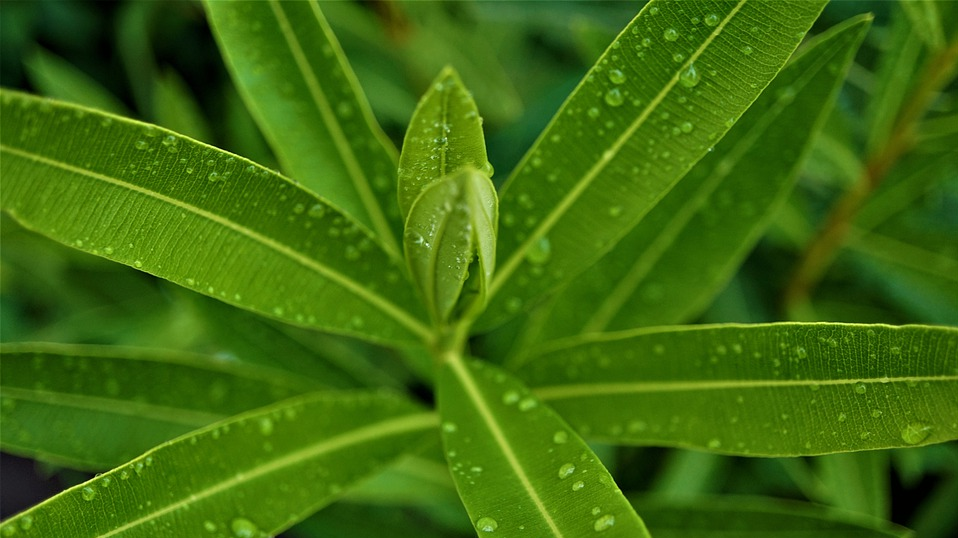
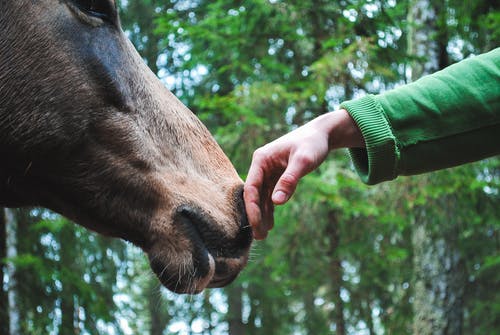
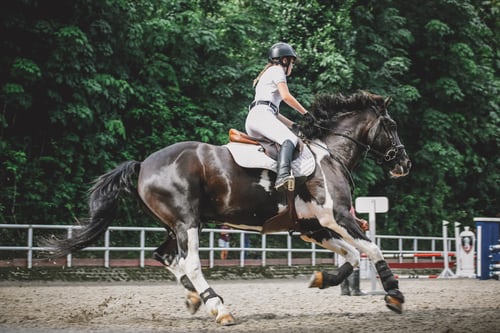


Thanks so much for the post.Much thanks again. Will read on…
“This is very fascinating, You’re an excessively skilled blogger. I have joined your feed and sit up for looking for more of your fantastic post. Also, I’ve shared your web site in my social networks!”
An outstanding share! I have just forwarded this onto a friend who had been doing a little homework on this. And he actually bought me dinner simply because I found it for him… lol. So let me reword this…. Thanks for the meal!! But yeah, thanks for spending the time to talk about this subject here on your web site.
My partner and I absolutely love your blog and find almost all of your post’s to be exactly what I’m looking for. Would you offer guest writers to write content for yourself? I wouldn’t mind creating a post or elaborating on some of the subjects you write regarding here. Again, awesome weblog!